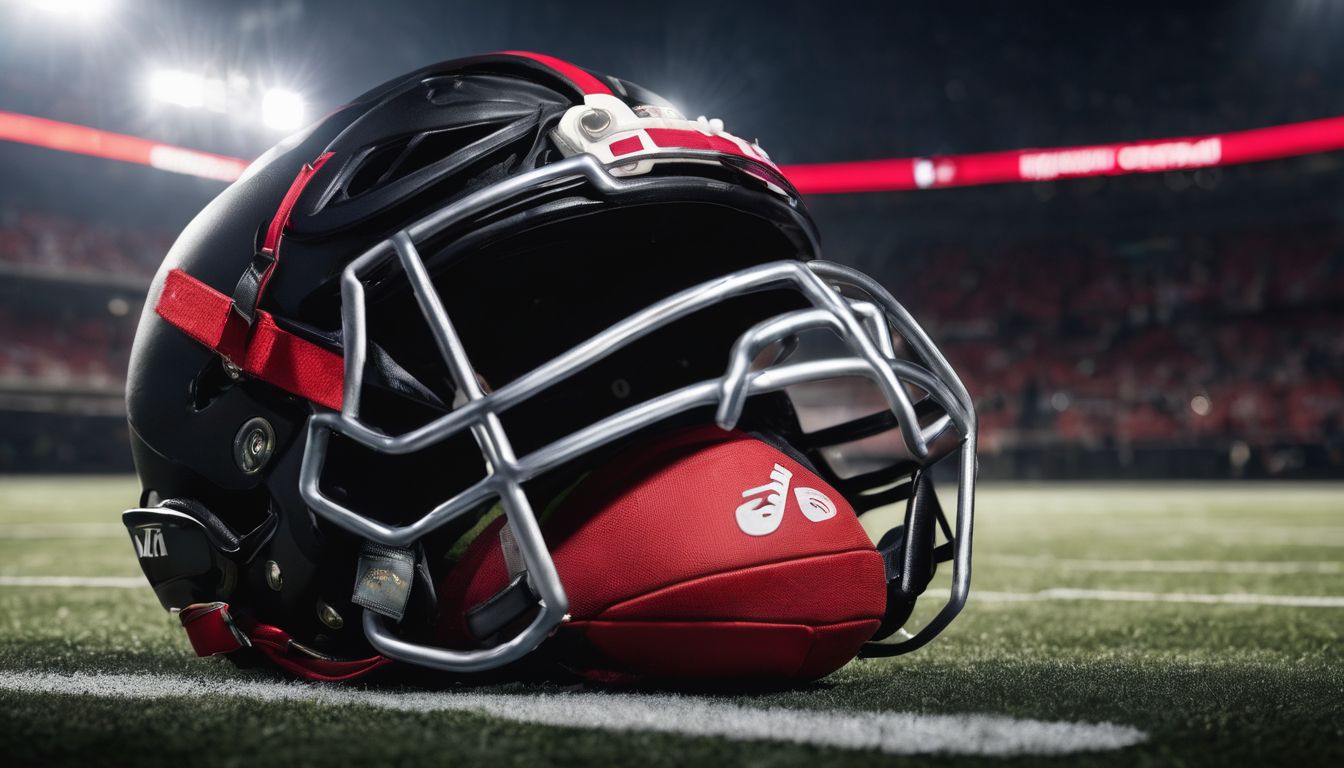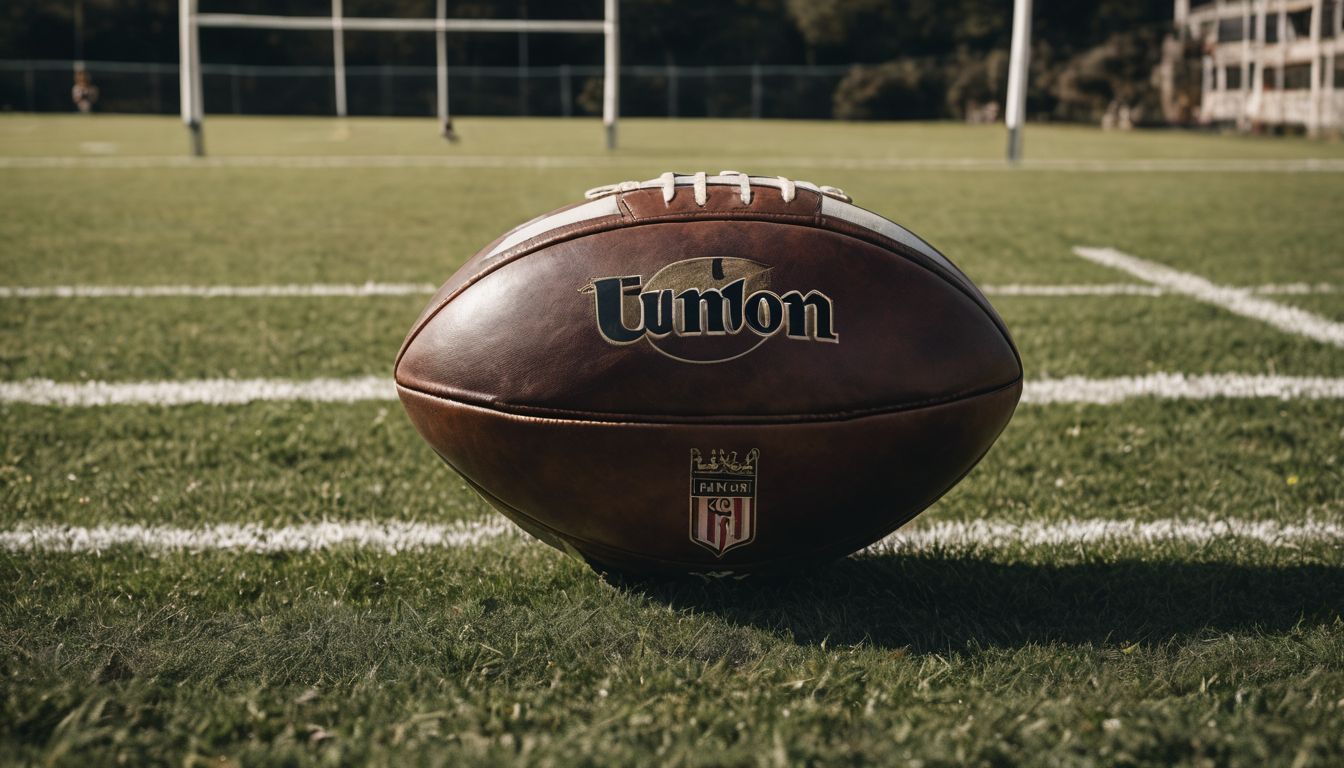Have you ever wondered what makes a rugby union club? Rugby Union is not just a game; it’s an institution with deep historical roots tracing back to the 19th century. This article will dive into the essence of a rugby union club, exploring its rich history and unique characteristics that set it apart from other sports.
Keep reading to discover the thrilling world of rugby clubs!
Key Takeaways
- Rugby Union clubs are affiliated with national governing bodies like USA Rugby to manage the sport’s development and ensure standard rules are followed.
- The history of rugby clubs dates back to the 1800s, with famous clubs including Cardiff Rugby Club, Saracens F.C., and Toulouse Olympique having significant impacts on the game’s evolution.
- Senior club rugby is integral for players’ advancement in skills and participation in competitions, contributing greatly to shaping modern-day rugby union’s dynamics.
- Clubs participate in local, national, and international leagues which highlight the sport’s competitiveness and foster a community spirit among fans and players.
- Differences between Rugby Union and other codes like Rugby League include team size (15 per side), scoring rules, tackling techniques, scrums, lineouts, as well as tactical approaches to gameplay.
What is Rugby Union?
Rugby Union is a popular team sport that originated in the United Kingdom. It is played with an oval ball and involves two teams of 15 players each, with the aim of scoring points by carrying or kicking the ball over the opposing team’s goal line.
The game is known for its physicality, strategic gameplay, and strong sense of sportsmanship.
You are currently viewing a placeholder content from Default. To access the actual content, click the button below. Please note that doing so will share data with third-party providers.
More InformationOrigins and growth of the game
The game of rugby union took root at Rugby School in England, where it developed its unique identity. Students played early forms of football with an oval ball and, over time, distinct rules emerged for what would become rugby union.
Clubs sprang up soon after to embrace these newly codified rules; the first Welsh club was established around 1850 at St David’s College, Lampeter.
As the sport gained popularity, its influence spread beyond school playing fields into international arenas. Rugby became a medal-winning activity in four of the first seven modern Summer Olympic Games.
This global appeal has contributed significantly to the growth and development of rugby as both a spectator sport and participant activity across continents.
Differences between Rugby Union and other codes
Rugby union varies from other codes in several ways. One prominent distinction is the number of players on each team, with rugby union featuring 15 players per side, while rugby league has 13 and American football just 11.
The scoring and tackling techniques also differ; for instance, in rugby union, a try amounts to five points whereas in rugby league it’s worth four. Moreover, the ball used in rugby union is oval-shaped compared to other codes which use a more rounded ball.
Furthermore, the objective of running or kicking the ball across the opponent’s goal sets rugby apart from many other team sports such as soccer or basketball where throwing or shooting into a net is crucial for scoring points.
History of Rugby Union
Rugby Union has a rich history, with origins dating back to the 19th century and a schism from the Football Association. The sport has since grown internationally, leading to the formation of the International Rugby Football Board.
You are currently viewing a placeholder content from Default. To access the actual content, click the button below. Please note that doing so will share data with third-party providers.
More InformationAntecedents and early history
Rugby traces its origins back to the 1800s at Rugby School in England, where a young student, William Webb Ellis, picked up the ball and ran with it during a game of football. This act was seen as the birth of rugby.
The formation of the first official Rugby Union came after a schism with the Football Association over handling rules, emphasising running with the ball and tackling opponents. The sport’s popularity grew rapidly and led to international interest, eventually resulting in the creation of the International Rugby Football Board.
Significant historical moments have contributed to shaping rugby into an internationally recognised sport it is today. Notably, rugby has been part of major events such as four modern Summer Olympics and continues to evolve through various competitions like World Cups and national leagues.
Schism with Football Association and formation of first Rugby Union
The schism with the Football Association led to the formation of the first Rugby Union in England. This historic split occurred in 1871 when 21 clubs withdrew from the FA over a dispute regarding handling of the ball.
Subsequently, these clubs formed the Rugby Football Union (RFU), establishing their own set of rules for the sport, which was distinct from association football.
International growth and appeal further solidified rugby union’s place as a prominent sport. The formation of an International Rugby Football Board marked another key milestone, leading to widespread recognition and development of rugby at global levels.
International growth and appeal
Rugby union has seen significant international growth and appeal, with the sport gaining popularity across various countries. The game has been a men’s medal sport at the modern Summer Olympic Games, played at four of the first seven competitions.
This exposure on a global stage has contributed to rugby union’s growing fan base and increased participation worldwide. Major international competitions such as the Rugby World Cup have further elevated the status and appeal of rugby union, drawing in diverse audiences from different corners of the world.
As rugby continues to expand its global reach, it creates an exciting platform for players and fans alike to engage with the sport on an international level, fostering a sense of camaraderie and community among enthusiasts worldwide.
This trend mirrors rugby’s historical roots that date back to Rugby School in England but also demonstrates its ability to evolve into a globally celebrated sport.
Formation of International Rugby Football Board
The International Rugby Football Board was established in 1886. It aimed to govern the playing, coaching, and development of rugby union worldwide. The board facilitated international competitions and worked to standardise rules and regulations across different countries.
As the sport grew in popularity, the board evolved into what is now known as World Rugby, overseeing major events such as the Rugby World Cup.
The formation of the International Rugby Football Board marked a pivotal moment in rugby history, enabling the expansion of the sport beyond its origins at Rugby School in England.
Differences between Rugby Union and Rugby League
Rugby Union and Rugby League differ in the number of players, rule variations, and overall style of play. To learn more about these key differences and gain a deeper understanding of the sport, keep reading!
You are currently viewing a placeholder content from Default. To access the actual content, click the button below. Please note that doing so will share data with third-party providers.
More InformationThe schism and key rule differences
The schism between Rugby Union and Rugby League in 1895 led to key rule differences such as the point system and the number of tackles allowed before possession is turned over. Here are some of the fundamental rule differences after the schism:
- Point System: Rugby Union awards more points for scoring, with a try worth 5 points and a conversion kick worth 2 points.
- Tackles: In Rugby Union, players can be tackled without the requirement for a play-the-ball as in Rugby League.
- Scrums: The scrum laws differ between both codes with Rugby Union having contested scrums while Rugby League features uncontested scrums.
- Number of Tackles: In Rugby League, teams have six tackles to score or surrender possession while there is no set tackle limit in Rugby Union.
- Lineouts: The lineout laws vary between the two codes; for instance, contested lineouts are crucial in Rugby Union but not in Rugby League.
Number of players on each team
In rugby union, each team consists of 15 players on the field at any given time. This setup creates a fast-paced and highly dynamic game, allowing for various strategies and plays to unfold throughout the match.
The distribution of players across different positions on the field – such as forwards and backs – adds complexity and depth to the gameplay, requiring coordination and teamwork among all members of the team.
With a total of 30 players present during a match, including substitutes, rugby union truly embodies the essence of a team sport where every individual’s contribution is crucial to achieving success on the field.
Scoring and tackling techniques
Rugby union involves scoring points through tries, conversions, penalties, and drop goals. A try is worth 5 points when a player grounds the ball over the opponent’s goal line. After a try is scored, the scoring team can attempt a conversion kick for another two points.
Conversions are taken from a position in line with where the try was scored. Successful penalty kicks and drop goals also contribute to the team’s total score.
Tackling techniques in rugby involve wrapping your arms around an opponent and bringing them to ground safely within the laws of play. Common tackling methods include front-on tackles, side-on tackles, and ankle-tap tackles.
Defensive players must use proper technique to avoid high tackles or any dangerous contact that could result in penalties or sanctions by match officials.
Definition of a Rugby Union Club
A Rugby Union Club is a team affiliated with national unions and governing bodies, playing at the international level. It differs from collegiate rugby and examples of famous clubs include Saracens and Toulouse.
Affiliation with national unions and governing bodies
Rugby union clubs are affiliated with national unions and governing bodies, such as USA Rugby, which oversee the sport’s development, organisation, and competitions. These affiliations ensure that clubs adhere to the established rules and regulations of the game while also providing support and resources for player development.
It allows clubs to participate in national leagues and tournaments under the umbrella of their respective governing bodies, fostering a sense of unity and standardisation within the sport.
Some famous rugby clubs like New Zealand’s Crusaders or England’s Saracens are part of this affiliation network, showcasing how these connections extend into international levels to promote competition across different regions.
Difference between club and collegiate rugby
Collegiate rugby and club rugby differ in several key aspects. Collegiate rugby is played by college or university teams, while club rugby consists of amateur or semi-professional adult teams affiliated with national unions and governing bodies.
The players in collegiate rugby are typically students, whereas club rugby players are not limited by age and may be professionals in other fields. Also, collegiate matches often take place on college campuses as part of an intramural sports programme, while club matches are held at various venues based on the team’s schedule.
In addition, collegiate rugby follows the regulations set forth by the institution’s conference or league governing body, while clubs adhere to rules established by their national union and affiliated organisations.
Examples of famous rugby clubs
Famous rugby clubs have a rich history and have contributed significantly to the evolution of the sport. Here are some examples of well-known rugby clubs:
- Cardiff Rugby Club: Founded in 1876, it is one of the oldest and most successful rugby clubs in Wales, with a strong tradition of producing national team players.
- Auckland Rugby Football Club: Established in 1883, this New Zealand club has a prestigious reputation for consistently producing top-quality talent and winning national titles.
- Saracens F.C.: With a rich history dating back to 1876, this English club has been a dominant force in European rugby, known for its professional setup and talented players.
- Barbarian F.C.: This unique international invitational team, formed in 1890, is renowned for its free-flowing, entertaining style of play and has featured some of the world’s greatest rugby talents.
- Leicester Tigers: Established in 1880, this English club boasts an impressive record of domestic titles and has been a stronghold for developing talented British players.
- Canterbury Rugby Football Union: A powerhouse in New Zealand rugby, this union was founded in 1879 and has consistently produced All Blacks players who have excelled at the international level.
- Toulouse Olympique: This French club dates back to 1907 and has been one of Europe’s most successful teams, with a storied history of domestic league triumphs and European success.
Role of Senior Club Rugby
Senior club rugby plays a crucial role in the governance and organisation of the sport, as well as providing opportunities for participation in competitions and leagues. It also contributes to the evolution of the sport through the development and success of club teams.
Governance and organisation
Rugby union clubs are typically governed by national unions and affiliated with governing bodies such as USA Rugby. Club governance involves managing membership, facilities, training, matches, and cultural activities.
The organisation is responsible for ensuring that the club adheres to rugby rules and regulations while fostering a positive club culture.
The management of senior club rugby teams plays a crucial role in participation in competitions and leagues as well as contributes to the evolution of the sport through their on-field performances.
Participation in competitions and leagues
Rugby union clubs participate in various competitions and leagues, showcasing their skills and teamwork. Players train rigorously to compete against other clubs, aiming to secure victories in local, national, and international tournaments.
These competitions provide an avenue for clubs to demonstrate their talent and dedication while fostering a sense of camaraderie within the rugby community. With club facilities serving as the backdrop for these events, fans eagerly anticipate thrilling matches that highlight the sport’s dynamic nature.
As clubs prepare for upcoming fixtures with intense training sessions and strategic game plans, they strive to make significant contributions to the sport’s competitive landscape. This ongoing commitment elevates the standard of play across different leagues, offering spectators riveting experiences on match days.
Evolution of the sport through club teams
Club teams have played a pivotal role in the evolution of rugby union. These teams have been at the forefront of developing and refining playing strategies, as well as contributing to the growth and popularity of the sport.
Through their participation in competitions and leagues, club teams have showcased the dynamic and competitive nature of rugby union, attracting new fans and players alike. Additionally, famous clubs such as Leicester Tigers, Toulouse, and Crusaders have become synonymous with success in the sport, further elevating its status on both national and international levels.
Furthermore, club teams provide a platform for aspiring players to hone their skills through rigorous training sessions and intense matches. This has resulted in an overall improvement in player quality while also nurturing talent that eventually contributes to national team success.
Conclusion
In conclusion, a rugby union club is an essential part of the fabric of the sport, offering players the opportunity to compete at a high level and develop their skills. Clubs are affiliated with national unions and governances bodies to ensure adherence to standards and fair play.
Through participation in competitions and leagues, senior club rugby plays a significant role in shaping the evolution of the sport. Rugby clubs continue to be vital contributors to the growth and success of rugby union worldwide.
FAQs
1. What exactly is a Rugby Union Club?
A Rugby Union Club is an organised group where people come together to play rugby, train for matches, and participate in competitions under the governance of USA Rugby.
2. Can you tell me about the different player positions in a Rugby Union Club?
Rugby has specific player positions that include roles like forwards and backs, each with unique responsibilities during a rugby game.
3. How does club affiliation work with Rugby Union Clubs?
Club affiliation involves being part of a registered club that plays rugby according to certain rules and may compete against other clubs in tournaments or leagues.
4. What happens at a Rugby Union Club besides playing games?
Besides playing the rugby game itself, members receive rugby training, engage in managing the club, and prepare strategically for upcoming rugby matches.
















